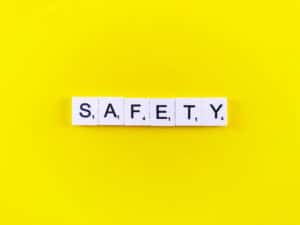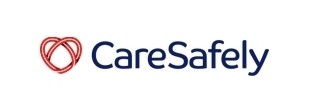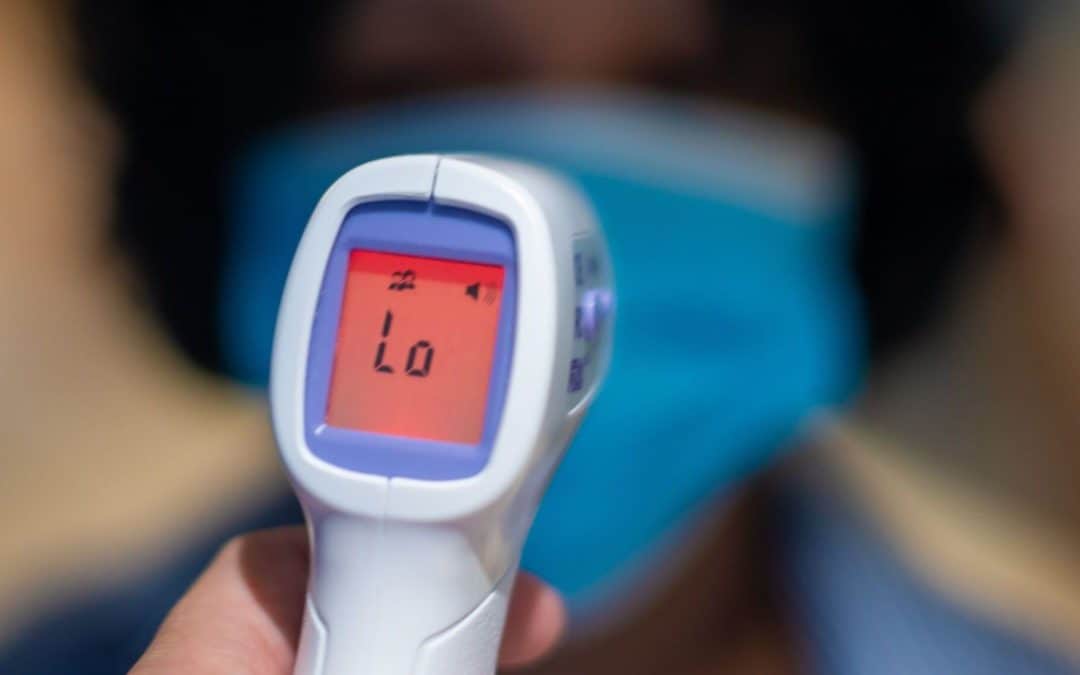Infection control and employee and patient safety are paramount to the long-term care industry, yet it remains a challenge for most facilities. The safety programs put in place need to be robust, well managed and monitored and reassessed on a regular basis. Technology can help with safety care, but it’s underutilized. Today we are interviewing one of the leaders of safety and compliance management software for the industry to learn how skilled nursing facilities can build and improve their safety programs.
Long-Term Care Industry’s Ever-Increasing Safety Challenges
Financial pressure and regulatory compliance have always put heavy constraints on long-term care facilities. Long-term care safety has been a hot topic since the start of the Covid pandemic, but when it comes to safety it’s not as simple as handwashing and mask-wearing. Effective safety programs are imperative in healthcare, especially so with vulnerable populations often found in long-term care and COVID-19 has shown just how devastating a lack of preparedness can be. When it comes to safety, there are a lot of underlying concerns that have come to the surface as of late and they aren’t going to fade from the spotlight until they are addressed.
COVID-19 Highlights Existing Gaps in Healthcare Safety for Residents and Staff
According to a New York Times database, more than 100,000 seniors have lost their lives in nursing homes and other long-term care facilities to COVID-19, and more than 700,000 residents have been infected. The numbers illustrate how issues in the safety of care can become a nation-wide health crisis.
Safety is not just about protecting the residents – it’s also about protecting employees. Harvard study shows that long-term care work is the most dangerous job in America right now.
In 2018, the Bureau of Labor Statistics data on injury rates of employees’ safety spotlighted how long-term care employees are two times more likely to be injured than a coal miner or even a construction worker.
LTC Safety Isn’t Working. Where Do We Start To Fix It?
There are many issues around our approach to safety that we, as an industry, need to expand upon and acknowledge. Care settings and their leaders must be more strategic and thoughtful about safety. We need to recognize that safety is not just about infection prevention and control, but employees, visitors, and facility. The safety program has to be purposefully created and followed and staff needs to have the required tools and equipment to be effective.
The Consequences of Ignorance
About 55 filed lawsuits have been filed against care facilities. These are primarily COVID-19-related criminal negligence charges and hundreds more are in the works. Some of them target individuals like the director of nursing, the executive director, or the administrator, but most target the organizations themselves. The consequences of inadequate safety protocols keep wreaking havoc in the industry, damaging reputations and profitability.
The legal lawsuits are merely a manifestation. It’s the end result that happens when you don’t go back to the beginning. And the beginning is we’ve got to have a much deeper strategic discussion and conversation around safety.
Safety Encompasses More Than Infection Control Programs
The massive safety problem COVID-19 has spotlighted doesn’t only relate to infection control programs, but broader terms of safety, entailing residents, employees, and med pass.
All these issues have been managed from a tactical level, but this is a strategic issue that needs to be at the top of the executive leadership’s agenda. When COVID-19 hit, long-term care leaders were purposefully taking a stand on the issue, but there wasn’t a game plan, a strategic approach to face it.
A significant part of the problem comes from the manual and paper-based nature of these organizations’ programs. Audits are run on paper forms and then stored in storage sheds. By the time you get through the whole assessing and auditing process, facilities are weeks or months behind in the most time-sensitive crisis the industry has ever faced. Efficiency is out the window and the ability for real-time action is essentially lost.
Care Facilities Must Be Strategic, Not Just Responsive
Being on the frontlines fighting a deadly pandemic, it’s like being on the frontlines in the military. You need a well-planned and well-rehearsed strategy before the battle begins or you’ll end up losing morale, trust, and sadly, people.
While long-term care leaders are busy fighting the current battle, they need to be getting ready for future ones as well.
A strategic approach is imperative for long-term care facilities to be prepared to act quickly when unexpected challenges arise. The action plan can’t be as reactionary as it was when COVID-19 caught the industry off guard in the first months.
We should be imaginative about risks. And it doesn’t take a lot of imagination to know that something like this could have happened, right? We had Ebola, we’ve had high flu seasons, other things in the past. So a lack of imagination is another issue.
Organizations need to have forethought about possible scenarios before they become reality. By continually reviewing their assessments, they have the chance to upgrade their guidance as new risk factors and safety issues surface. This practice should be taken from a multidisciplinary perspective so that it’s not only handled from a QA and director of nursing point of view, but also from a frontline caregiver’s perspective.
Financial Constraints to Adequate Safety
To a great extent, long-term care facilities’ financial challenges hinder their ability to invest in preventative safety programs, or in some cases to implement much-needed safety protocols at the time of need at a truly effective level. The industry’s spending on technology, in particular, is lagging far behind that of other industries or even other healthcare settings like hospitals. Budgets just haven’t been there. But there are areas, like safety, that simply cannot be adequately addressed without financial resources.
Can We Manage Safety Without Technology?

These days it’s hard to imagine a long-term care operation without essential technology assets like an EHR. Most organizations adopt these digital systems to ensure efficient resident data management, financial interoperability, and clinical functionality. If safety is a strategic issue of the same order of magnitude, it’s easy to see why having electronic management systems in place is so important.
What Do We Owe Our Healthcare Workers?
If we are to ask caregivers to be the heroes, to fight the battles on the frontline, we need to do everything we can to protect them and enable them to do their best work without the need for unnecessary sacrifices and hardships that could have been avoided. They are the ones who need to focus on the immediate tasks at hand. It is the leadership’s responsibility to actively put time and money into ensuring that staff and residents are able to work together effectively and in as safe an environment as possible no matter what challenges arise.
Long-Term Care’s Investment in Digital Safety Solutions
The long-term care industry needs to invest in digital tools and a consistent set of processes that enable an infection control leader or a director of nursing to always be a step ahead in safety, compliance, and risk management.
Not having a good safety program in place impacts your census, your brand, your community outreach, and your staff morale. All outcomes are connected. You can’t run an organization effectively without preventing, identifying, and correcting issues. Facilities have been struggling to figure out a solution, so CareSafely has designed an answer to that safety issue.
What Can Long-Term Care Facilities Do to Improve Their Safety Programs?
Whether you use digital platforms or manual processes, there is a proven holistic approach to infection prevention and control based on the “Four A’s of Safety,” a process other “safety-first” industries rely on.
- Assess: There are over 70 COVID-19 infection control risks that LTC facilities should be assessing. Right now most SNFs are actively managing less than 30 of these. Leverage the CareSafely pre-built assessment or build your own comprehensive assessments based on the CDC, CMS, and other government guidance and requirements.
- Action plan: Build action plans to fix all “open” risk areas. Ensure your action plans include a root cause analysis, corrective actions, completion date, budget, and assigned lead. The big advantage of a digitized action plan is the ability to track progress at the local, regional, and corporate level and use alerts and reminders to ensure actions are completed and risks are mitigated.
- Audits: Stay compliant with your IPC and safety protocols with ongoing audits. One key area is to audit staff competencies to ensure they are following safety protocols around hand hygiene and wearing PPE. Compliance can improve from 68% to 94% with digital staff competency audits.
- Analyze: Identify risks and track progress to monitor assessment scores, action plans, and audit results. Long-term care organizations with multiple locations should track and benchmark across their network and focus on high-risk areas.
What to Look For in an Infection Prevention and Control Platform
 An effective solution will allow facilities to manage a digitalized, sustainable, and robust safety and compliance program and simultaneously save caregivers and administrators time and energy. Make sure your platform provides the pre-built assessments and audits you need. These should be based on the latest science and government guidelines and should be easily customizable to your unique needs too. A system that all risk factors are considered so you can actively manage safety throughout your facility or multi-facility organization. Your system should help infection preventionists solve safety concerns before they become problems.
An effective solution will allow facilities to manage a digitalized, sustainable, and robust safety and compliance program and simultaneously save caregivers and administrators time and energy. Make sure your platform provides the pre-built assessments and audits you need. These should be based on the latest science and government guidelines and should be easily customizable to your unique needs too. A system that all risk factors are considered so you can actively manage safety throughout your facility or multi-facility organization. Your system should help infection preventionists solve safety concerns before they become problems.
What Makes CareSafely Different?
CareSafely has built the first complete safety and compliance platform just for the LTC industry. Staff are really busy and it’s a hectic operating environment, so CareSafely software is easy to learn and use. It takes about an hour to get the system implemented.
The software is just one part of the solution. Even more important is the actual expertise on what to assess, what to audit, what to comply with. So the solution also includes a library of pre-built assessments and audits for infection control, employee safety, and resident safety. Everything from COVID-19, MRSA, C. Diff, employee injury, med pass, staff competency, and dozens of more topics. These are based on the latest government and industry guidance, so management doesn’t have to re-invent the wheel. The assessments and audits can also be customized to each facility’s own needs.
Who is Raj Shah?
 Raj Shah is the founder and CEO of CareSafely, the first safety and compliance software platform built for the unique needs of skilled nursing, senior living, and home health. Raj’s passion is to build practical and affordable software solutions to solve big safety, compliance, and quality challenges. Prior to CareSafely, Raj was the President of Alchemy Systems, which helps over 1.5 million food workers keep food safe from pathogens. Raj earned his MBA from Kellogg (Northwestern) and a Bachelor’s in Accounting from LSU.
Raj Shah is the founder and CEO of CareSafely, the first safety and compliance software platform built for the unique needs of skilled nursing, senior living, and home health. Raj’s passion is to build practical and affordable software solutions to solve big safety, compliance, and quality challenges. Prior to CareSafely, Raj was the President of Alchemy Systems, which helps over 1.5 million food workers keep food safe from pathogens. Raj earned his MBA from Kellogg (Northwestern) and a Bachelor’s in Accounting from LSU.


